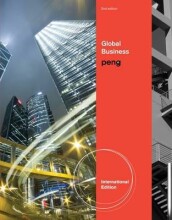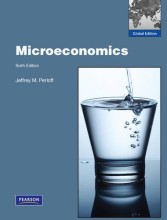Summary: International Business | 9781408019566 | Mike W Peng, et al
- This + 400k other summaries
- A unique study and practice tool
- Never study anything twice again
- Get the grades you hope for
- 100% sure, 100% understanding
Read the summary and the most important questions on International Business | 9781408019566 | Mike W. Peng, Klaus E. Meyer.
-
1 Globalising business
This is a preview. There are 25 more flashcards available for chapter 1
Show more cards here -
What are emerging economies?
Economies that only recently established institutional frameworks that facilitate international trade and investment, typically with low or middle level income and above average economic growth. -
What are the BRIC countries?
Brazil, Russia, India and China. They are an example of emerging economies -
What are expatriate assignments?
Temporary jobs abroad with a multinational company. -
What is the GNP/GNI?
Gross National Product or Income. It is the gross domestic product plus income from non-resident sources abroad. -
What are the advantages and disadvantages of globalisation?
+ Contribution to economic growth and standards of living
+ Sharing of technologies
+ Extensive cultural exchange
- Undermines wages in rich countries
- Exploits workers in poor countries
- Gives MNEs too much power -
What are the 4 most general views of globalisation?
1. The accelerated pace at which technologies spread around the globe (internet etc.)
2. The rising power of MNEs and growing inequality in the world
3. Fundamentally positive effects, but finetuning would ban out the inequality
4. A force that makes us more similar and eliminates distinctiveness of national cultures and identities -
What is the global economic pyramid?
A pyramid made up of 3 layers.
1. Top tier - per capita GDP/GNI > €15000, appr. 1 billion people
2. Second tier - per capita GDP/GNI €1500 - 15000, appr. 1 billion people
3. Base of pyramid - per capita GDP/GNI < 1500, appr. 4 billion people -
What are the characteristics of globalisation 1.0 and 2.0?
1. Technological changes and trade liberalisation (1880-1930)
2. Mne's, trade liberalisation, raise of emerging economies (1979 - ...) -
What does the law of comparative advantage say?
That a nation should specialise in producing and exporting those commodities which it can produce at a relatively lower (opportunity) cost, and it should import those goods for which it is a relatively high-cost producer. -
What are the 2 types of factor conditions?
1. Created factor conditions - infrastructure, skilled labour, etc.
2. Natural factor conditions - may be disadvantageous, as firms become complacent
- Higher grades + faster learning
- Never study anything twice
- 100% sure, 100% understanding

































